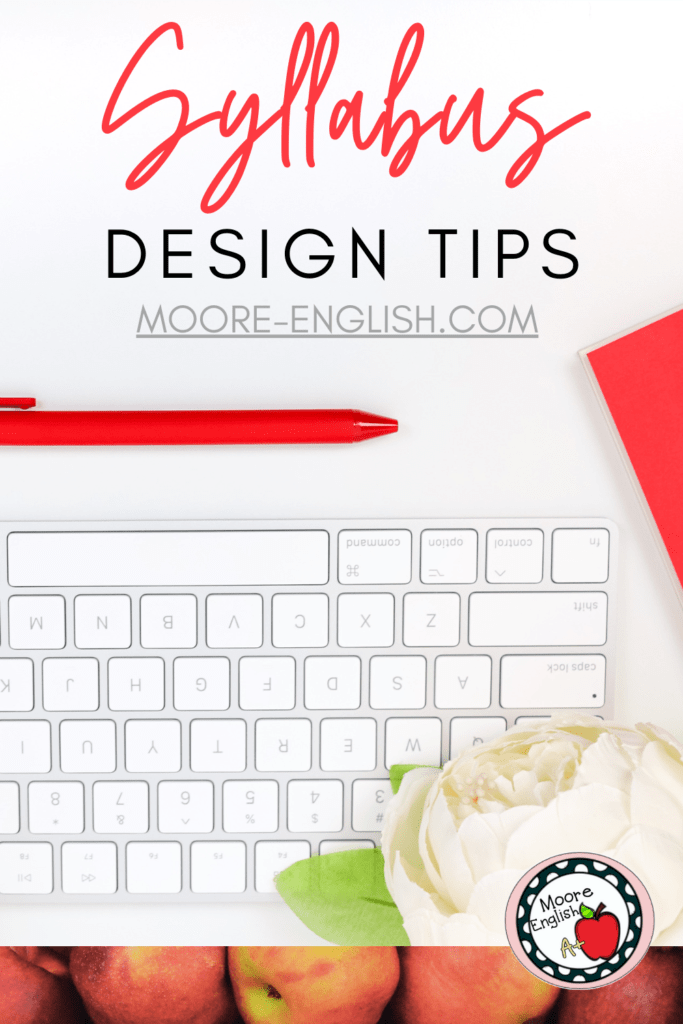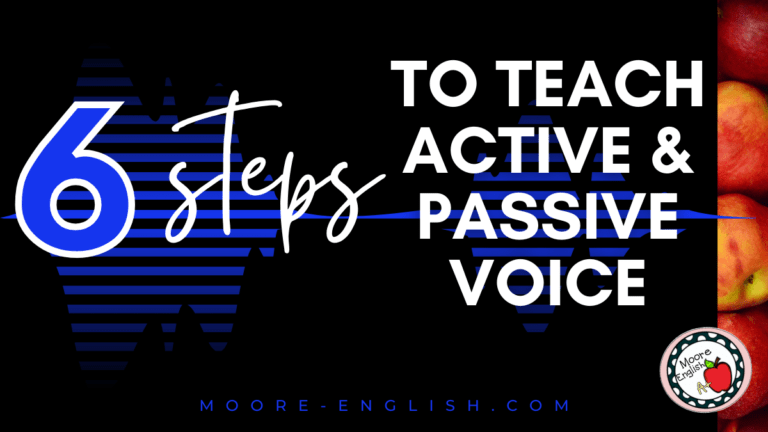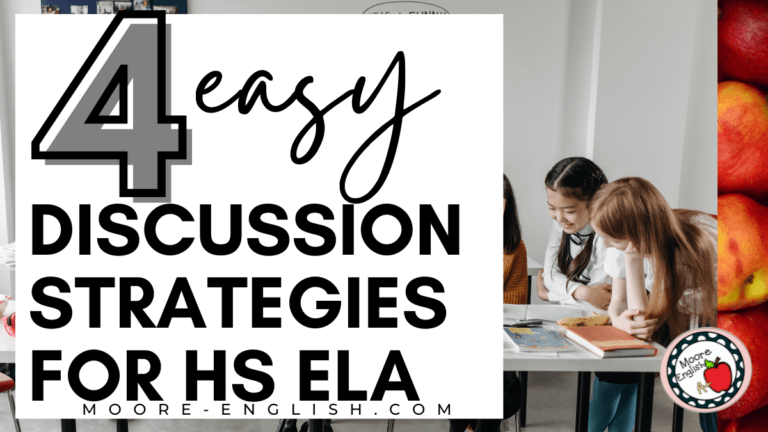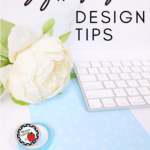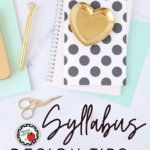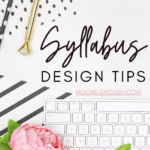As the start of a new semester draws near, I’m updating my syllabus. While writing your syllabus can be a chore, I’d encourage you to approach your syllabus from a design mindset. Consider all the important information you want to convey to parents and students. And then set out to design the most compelling packaging. Here are some tips for designing a compelling syllabus.

This post this post may contain affiliate links. Please read the Terms of Use.
Start with the Big Picture
1. Make a good first impression. While students will have a personal impression based on their first-day experience, often times the syllabus is the first time parents get to know the teacher. For this reason, make sure your syllabus is professional: keep it clean, tidy, and readable.
After years of making my syllabus in Piktochart, I’m switching to Canva this year because the program is easier to use and the graphics are cleaner. If you’re using a design program to create your syllabus, pay attention to color. Colors look great on screen. But if you aren’t able to print in color at school, any paper copies are going to be degraded.
Then, proofread your syllabus and make sure to include contact information and the times when you are most accessible. Finally, try to keep your syllabus to one page front and back. A lot of readers will check out by the end of the first page, so keep it concise and precise.
Include Relevant Details
2. Meet your building’s expectations. My building has a specific list of syllabus expectations. So make sure you ask about requirements and make revisions as needed. Think of your building or department’s syllabus expectations as design guidelines. Your job is to design a syllabus that checks all the boxes but still reflects your professional beliefs and values.
3. Summarize the course. At the high-school level, parents do not need an exhaustive description of every unit and lesson. Keep the course description concise. But make sure to mention key literature and summative assessments. This gives parents fair warning if they are going to object to a text. I actually use the course description that’s in my school’s course selection handbook.
4. Detail grading procedures. Make clear how student work will be assessed, how often you will update the grade book, and how parents can access student grades. In addition, include a point break down, including which categories have the most weight. This is especially important in case parents contest your grade book later on in the course. This is also where I point students when they ask how their work will be assessed.
5. Define grading policies. In addition to letting students and parents know how work will be assessed, also let students and parents know what happens if students are absent, turn in work late, or cheat on an assignment. Spell out these policies, their implementation, and their consequences so when students ask questions later, you can return to these documents.
In particular, I use the harshest language in describing each of these so that when/if I choose to exercise leniency later, students understand that I am giving grace. As with classroom management, it’s much easier to start firmly and then become more lenient later. But it’s nearly impossible to start with lax policies and bare down later.
Key Syllabus Details
6. Get a signature. Asking students and parents to sign your syllabus formalizes the document as a “contract” of sorts. This is a tool that you can reference later in terms of classroom management, grading, and assessment. You’re not asking for signatures as a “gotcha” but as a means of accountability. This lets students and parents know that you take learning seriously, and they should too. Additionally, keep all the signatures. During difficult conversations with students, I sometimes pull out their signed syllabus and ask them to reflect on its meaning. This can be a powerful tool for helping students reconsider their behavior.
7. Be creative in your design. Instead of thinking of writing your syllabus as a chore, try to enjoy the design process. Use some engaging images, add lists or graphs, include a brief self introduction. Try to make this a document you enjoy creating so that when it’s time to use the syllabus, you feel comfortable defending it. This year, I also decided to try different ways to present my syllabus. For one block of younger students, we did a Syllabus Scavenger Hunt. And with another group of students, I played Syllabus BINGO. Both options were fun, engaging ways to get students to consider important class policies. Both of these resources are included in my Back-to-School Bundle!
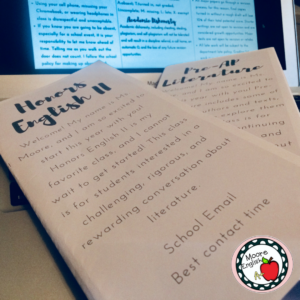
If you’re interested, my 2018-19 syllabus can be found for free here. Feel free to copy and remix the style and content to meet your needs. Designing in Canva proved to me a great choice. And I ended up with a brochure-style syllabus rather than an infographic or one-pager.
Here are other great ideas for back to school:
- Back-to-School Bundle
- ELA Goal Setting Freebie
- 4 Back-to-School One Pagers
- First Impressions Book Reviews
- Back-to-School Writing Journals
- High School Writing and Grammar Data Sheets
- 3 Ways to Use Letter Writing in Secondary ELA
- Planning Successful First Weeks in Secondary ELA
- Successfully Planning the First Three Days of School

Photo credit: Katie Harp

